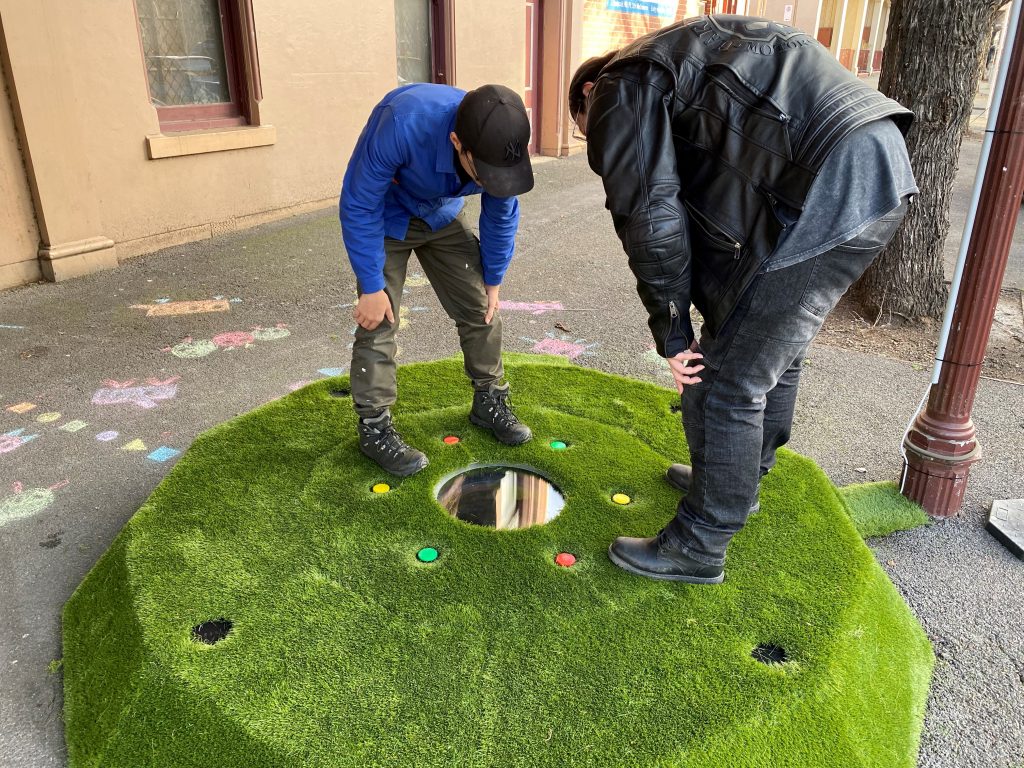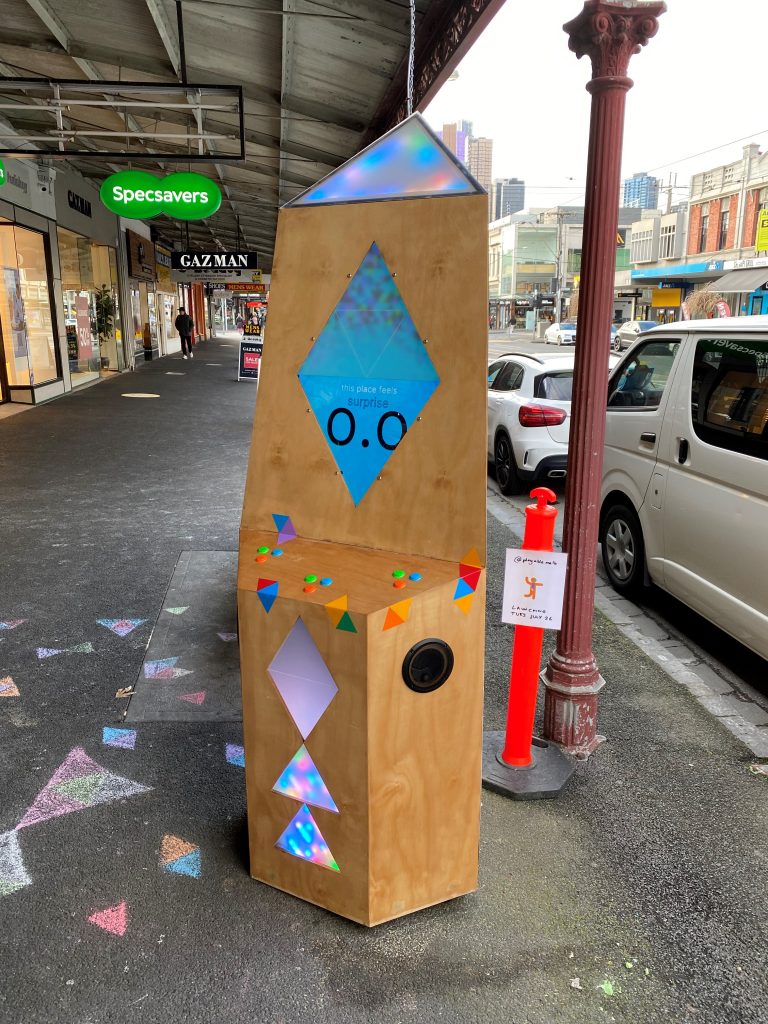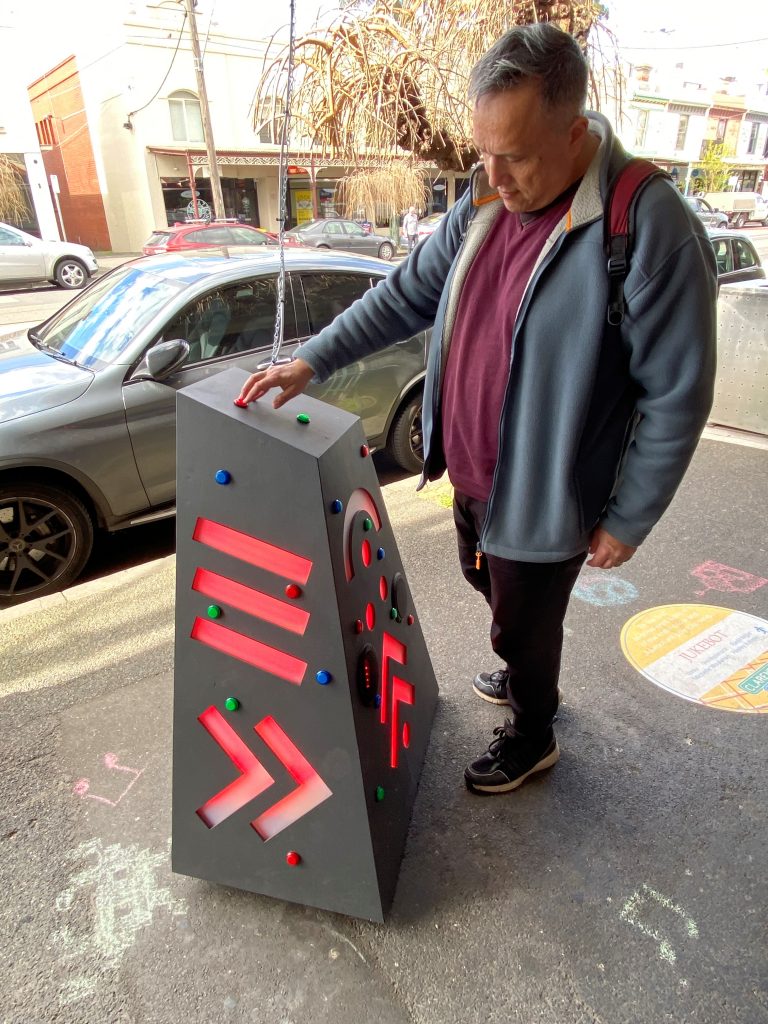
On July 26th the Clarendon Street Arcade project officially arrived on the streets of South Melbourne. Five bespoke arcade cabinets designed by artists, gamemakers, academics, students and First Nations People are now playable until October. Created by RMIT’s Future Play Lab and funded by the City of Port Phillip’s COVIDSafe Outdoor Activation Fund, the cabinets form a “trail” along Clarendon Street for residents, visitors and those familiar with the project to discover.

Yawa

Heading south along Clarendon, Yawa is the first arcade cabinet players will encounter. Yawa is a game about the Boon Wurrung language for up to four players, created by N’arweet Carolyn Briggs, Jarra Karalinar Steel and Narayana Johnson. Resembling more of a tabletop game than a typical arcade cabinet, players sit on stools around a table and look down on a flat screen. When players move one of four joysticks, an avatar appears in the form of a possum spirit – created by Steel and featuring in her other public artworks and installations. Players then move across an intricately layered, abstract map of Country, collecting words in the Boon Wurrung language and learning their English counterparts. The words are spoken by Briggs, who is a Boon Wurrung senior elder and founder and chairperson of the Boon Wurrung Foundation.
MAGI 10-in-1

MAGI 10-in-1 is a more traditional arcade cabinet, with three games created by current and recently graduated MAGI (Master of Animation, Games and Interactivity) students at RMIT. The games include Tram Chaser, a side-scrolling platformer by Eamonn Harte; GlugGlug Game by Justin Jattke, a fast-paced rush to water dying houseplants; and Sticky City by Khatim Javed Dar and Monique Kemboi, where objects in the city stick to players as they move, increasing or decreasing their score. Although up to ten games had originally been planned, only these three were completed in time for launch – although more games may be uploaded to the compilation over the coming months. The games take about 90 seconds each to play and in classic arcade style proved challenging for many players on the launch night.
Yomeci Hole

Yomeci Hole, also known as Yomeci Arcade, is the latest project from the YomeciPlay collective. It resembles a mound of grass on the sidewalk, with a virtual hole at its centre surrounded by six buttons. As players peer down into the hole, the game instructs them to stomp on the buttons to clear the screen and progress through a realm of Yomeci creatures. Yomeci Hole is perhaps the most abstract Clarendon Street Arcade “cabinet”, but like all the other cabinets it invites fast-paced play and is extremely replayable. Players can play solo or with friends or other passers-by to hit the correct buttons and progress through each layer of the game world. On launch night, the game was popular with four school children who enthusiastically jumped on, slapped and rapidly pounded the buttons in multiple consecutive games.
Musimoji

In Musimoji, up to three players compete to create music by firing emojis corresponding to their colour. Musimoji is created by Troy Innocent and Allison Walker. Its cabinet resembles a monolith rising from the ground and is decorated with symbols that would be familiar to those who have experienced Innocent’s work before. Its music, meanwhile, is created by Walker, a Melbourne-based composer known for her ambient music.
Jukebot

Located outside dessert shop Dessertopia, Jukebot is an interactive jukebox for up to three players. The cabinet has no screen, but is wired with 24 green, red or blue buttons. Once players choose a colour they must hit all the buttons of that colour. The first player to do this wins, and Jukebot will play a corresponding track before resetting. In between play sessions, a voice will sometimes invite passers-by to play it. Jukebot has been the most technically challenging cabinet to make because of its many components. Initially the buttons were wired to an Arduino device, but it has been unable to handle the sophisticated sequences required to play the game, rendering it unplayable at times. It will soon be upgraded to a Raspberry Pi, which the Future Play Lab hope will resolve its lingering technical problems.
Updates and more information about Clarendon Street Arcade can be found on the City of Port Phillip’s website and by following Playable City Melbourne on Instagram.
Dale Leorke is an embedded ethnographer in the Future Play Lab.
